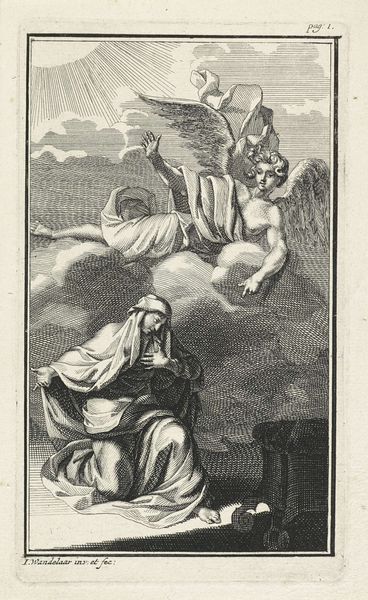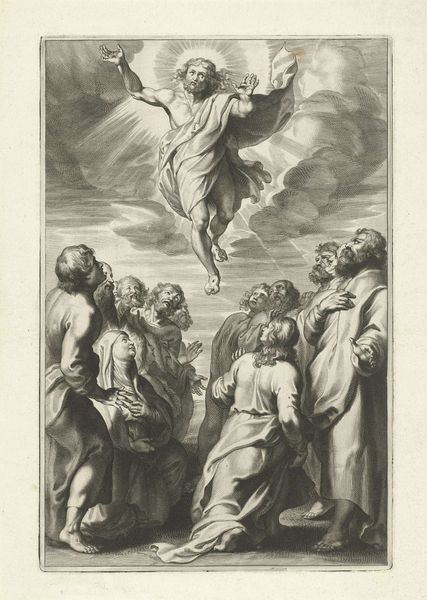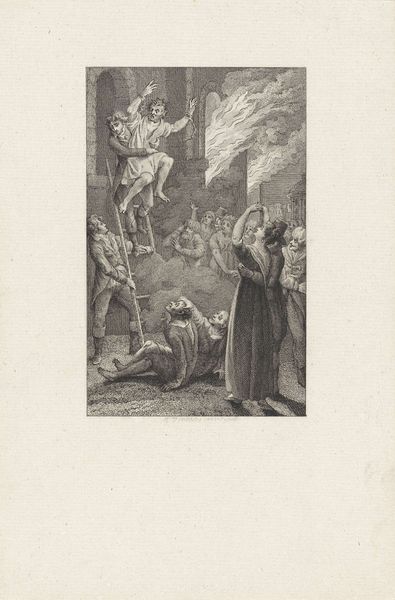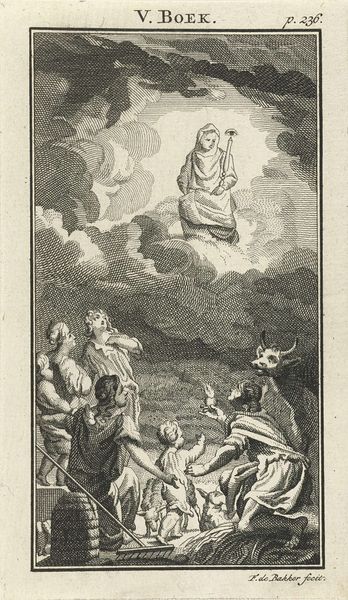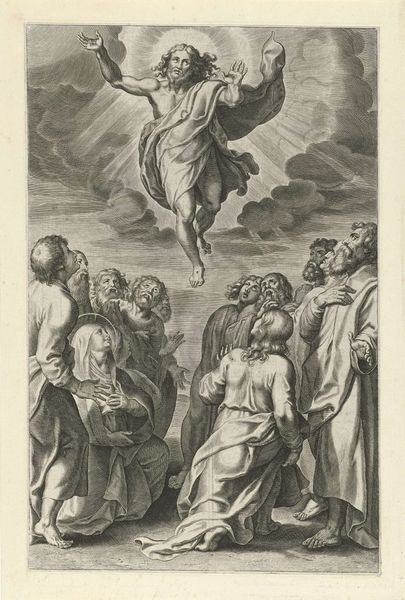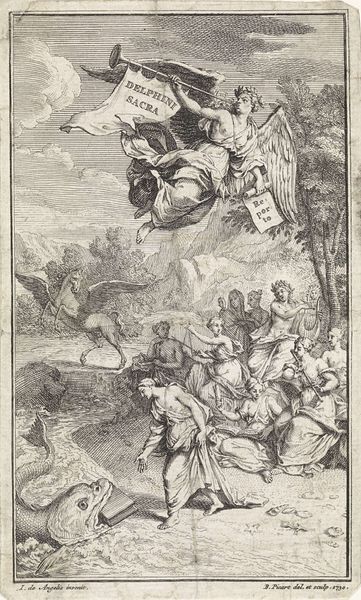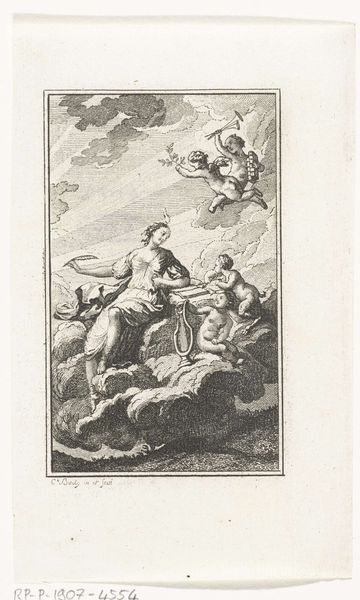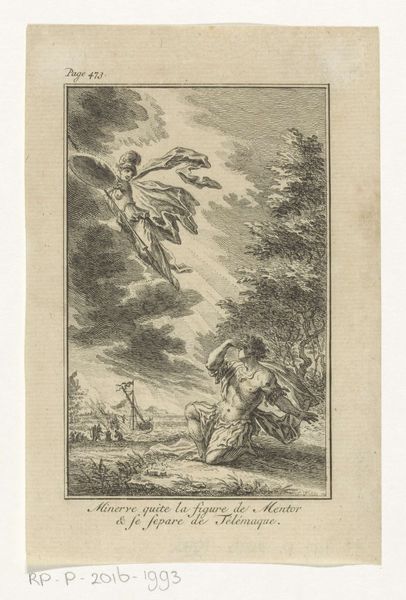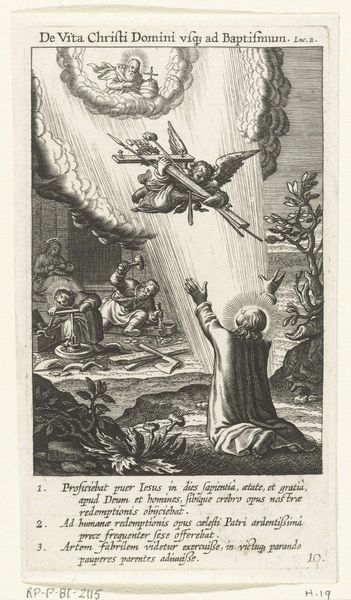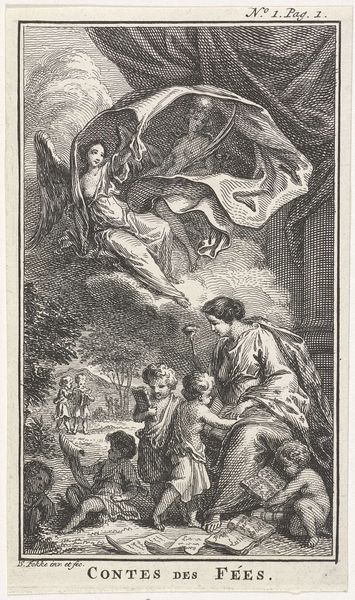
Dimensions: height 238 mm, width 151 mm
Copyright: Rijks Museum: Open Domain
Editor: So, this engraving, "Hemelvaart van Christus" or "Ascension of Christ," was created in 1797 by Reinier Vinkeles. Looking at the figures below, there's a strong sense of awe, even disbelief. What social narratives were in play during this time period? Curator: That’s a very perceptive initial reading! I think considering the rise of Enlightenment ideals and secularism, even while religious beliefs still held significant cultural power, helps us contextualize this piece. Vinkeles, working within a baroque aesthetic, creates this incredibly theatrical moment. Editor: The theatrical element really stands out. It’s not just a religious scene; it’s a performance of power and devotion. What can this tell us about the relationship between art, religion, and social control at the time? Curator: Precisely! Art was often a tool to reinforce dominant ideologies. Ask yourself, how does the engraving depict Christ’s body, and what message does that send to the largely subjugated populace? Think about who is included in the scene and who is left out, or rather, not deemed worthy to be included. Editor: That’s interesting. Christ is very luminous, almost ethereal, physically separated from the others below. It reinforces a hierarchy. Curator: Yes, and considering the political turmoil of the late 18th century, you can almost see the engraving working to reassert traditional order, through very specific gender and class representations. Do you see any gestures or expressions which reinforce certain roles, particularly in relation to faith and obedience? Editor: Now that you mention it, those kneeling or reaching upward seem to embody the ideal subservient subject. That wasn't something I originally observed. Curator: Seeing the ascension through the lens of power dynamics changes how we read the image, doesn't it? Editor: Absolutely. It makes me think more critically about the narratives that are being presented and for whom. Thanks so much! Curator: Likewise. Remembering that artworks exist within layered contexts—political, social, economic, gender—opens so much to new perspectives on visual imagery.
Comments
No comments
Be the first to comment and join the conversation on the ultimate creative platform.
